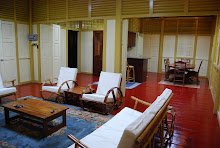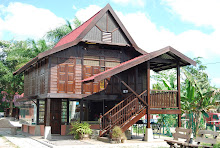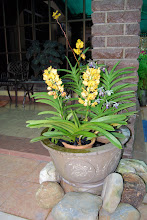Mandarin Orange
Observedly, the annual Chinese New Year celebration comes with a definitive animal name and this year the 'Rat' takes its place. The Chinese ushers in the New Year with the traditional family dinner. All attempts are made by the respective kins to return home and present themselves in the family home. In the good old days especially in ancient China it would have been a huge calamity if a family member found himself unable to reach home. I have not yet seen the sumptious food they served or consumed but being Malaysian you can be sure it cannot be just simple serving. One thing for sure, the Mandarin orange would certainly hit the market several weeks earlier than the festival day and would certainly be on the tables of all Chinese homes.
Ketupat and Rendang
The Malays also return home for the grand celebration. The annual rush sparks safety precaution as usual. They want to be back in the kampong and participate in the activities especially on the first day of Aidilfitri. They too want to sit down for the first breakfast after sunrise having abstained from eating food in the daytime for the whole of the previous month. Syawal sees a grandeur celebration extending for no less than three days with visitation and many house calls. Not to mention ketupat and home cookings served in the respective homes. One definite aspect with the Malays is that all men and women and children too gather at the mosque nearest their homes in the morning of the first of Syawal to pray. On this occasion even the largest mosque would not easily offer a vacant space for the worshipper. If he is late probably he has to bring his own prayer mat and find space outside the mosque building. After the prayer, Muslims visit the graves of their departed which ordinarily would be by the sides of the village or town mosques.
However I notice that the Chinese take a rather cool aspect of the celebration in the following days after the 'Makan Besar'. With business taking a good break; shops closed, the Chinese continue to take good respite. Some enjoy home comforts while others run off to chosen destinations. In the meantime the occassion sees the movement of 'lion dance' groups in the community, parading their skills, pounching on red packets with prancing and beating of drums. The Chinese also make grave-yard visits to appease the ancestors for restful eternity but this is done on 'all souls day'.
Putu Mayong or Masalodeh
Deepavali and Thaipusam see the Indian community out in their best finery. The former earns the national distinction of being a public holiday with the latter holding pride in Selangor and Penang especially. Thaipusam with the movements of chariots from one temple to another, the breaking of coconuts along its path and followed by devotees carrying 'kavadee' has been earmarked as a 'must visit' date for many including tourists to Malaysia. Deepavali known also as the 'festival of lights' usher in for the Indian community warmth and happiness for the family with the homes taking more radiant images.
Well it seems the three component racial composition of Malaysia seems to enjoy festival breaks peculiar to each ethnic and religious identities though all benefited by the holidays. It too looks like each is enjoying at least two main religious or cultural celebrations. Thaipusam now looks being declared a national holiday too though currently only Selangor, Penang and Wilayah Persekutuan enjoy the benefit. The Chinese have CNY and Wesak Day or Christmas Day.
We certainly enjoy all the breaks and off days and not forgetting delighting ourselves with all the glorious dishes, cakes and fruits served . 'Ketupat', 'masalodeh' and 'kuih bakul' are signature keepsakes enjoyed by each community and shared by the other. The children goes for the 'duit raya' and the 'ang pau'. None would forget the collection and the innocence of childhood. I am sure the Indian elders too would reward their youngs with similar goodies. We have yet to know what they call this special handouts.
For me give me anytime 'tapai',' pulut kacau' and ' jeruk maman' all mouth watering to say the least. This CNY we have 'ikan selumbu' for curry and 'ikan siakap' for hot steaming 'kukus kelubi' with the family. There are many species of fish in the market though many are getting on the list of 'rare' or 'extinct' ones. It was only yesterday that I was introduced to 'ikan angsa' said to be tasty and delicious. It was another sit down lunch with the whole family, Malay style. Syukur.











1 comment:
Wah, Pak Non pun ada makan besar juga ka? Must be one good gathering you had there. Nice, mouth-watering spread too, including 'ikan angsa' ?
Malaysia is blessed to have people of various ethnic background - let's celebrate our diversity.
Post a Comment